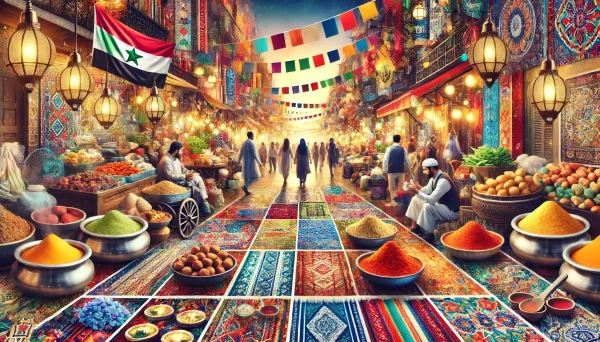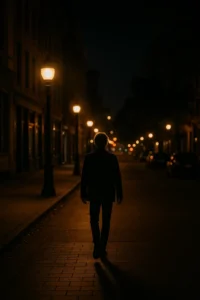Street markets are more than places to shop—they are vibrant hubs of culture, tradition, and daily life. Around the world, they offer a sensory overload of colors, scents, sounds, and flavors. From night bazaars buzzing with neon lights to floating markets gliding over calm waters, these spaces tell the story of a city’s soul. Let’s explore some of the most exotic and fascinating street markets on the planet, where the ordinary becomes extraordinary.
1. Chatuchak Market – Bangkok, Thailand
One of the largest street markets in the world, Chatuchak Market is a sprawling maze of more than 15,000 stalls. You can find everything here—vintage clothes, handmade crafts, exotic pets, antiques, and street food that will blow your mind. It’s organized chaos, and getting lost is part of the fun. A trip to Bangkok isn’t complete without experiencing this sensory adventure.
2. Jemaa el-Fnaa – Marrakech, Morocco
This historic square in the heart of Marrakech transforms into a living theater every evening. Storytellers, snake charmers, acrobats, and food vendors fill the air with energy and spice. The market offers traditional Moroccan goods like spices, leather products, lanterns, and rugs. It’s a place where ancient traditions meet the present in a dance of noise, light, and flavor.
3. Tsukiji Outer Market – Tokyo, Japan
Once home to the world’s largest wholesale fish market, Tsukiji’s outer market still thrives with seafood vendors, kitchenware stalls, and sushi counters. Early mornings are the best time to explore and sample the freshest sashimi, grilled eel, and tamago (sweet omelet). It’s a place where precision meets tradition, offering a taste of Tokyo’s culinary soul.
4. Chichicastenango Market – Guatemala
Nestled in the Guatemalan highlands, this colorful market is famous for its vibrant textiles, traditional masks, and Mayan crafts. Held every Thursday and Sunday, it’s one of the best places to experience indigenous culture. Amid the smoke of incense and chants from the Santo Tomás Church steps, ancient rituals blend with commerce in an unforgettable setting.
5. Grand Bazaar – Istanbul, Turkey
With its domed ceilings and labyrinthine alleys, the Grand Bazaar is one of the oldest and largest covered markets in the world. Here, over 4,000 shops offer carpets, ceramics, jewelry, spices, and lanterns. Bargaining is part of the experience, and the rich smell of Turkish coffee lingers in the air. It’s both a shopper’s paradise and a living museum of Ottoman commerce.
6. Maasai Market – Nairobi, Kenya
This rotating open-air market showcases the vibrant creativity of Maasai artisans. Beaded jewelry, colorful fabrics, carved masks, and tribal accessories are on display. It’s a beautiful way to connect with local culture and support small artisans. Every day the market pops up in a different part of the city, so timing is key.
7. La Boqueria – Barcelona, Spain
Just off La Rambla, La Boqueria is a feast for the senses. Dating back to the 13th century, it’s packed with fresh produce, seafood, meats, cheeses, and sweets. The colorful stalls are perfect for grabbing tapas, sipping juice, or watching locals do their daily shopping. Though touristy, it retains an authentic charm that blends tradition with taste.
8. Floating Market – Damnoen Saduak, Thailand
In this iconic Thai market, vendors sell goods from wooden boats along narrow canals. The sight of boats brimming with tropical fruits, flowers, and local dishes is both picturesque and unique. Though it’s become a tourist attraction, the market still offers a window into Thailand’s traditional water-based commerce.
9. Otavalo Market – Ecuador
Located in the Andean highlands, Otavalo hosts one of South America’s most famous indigenous markets. Brightly woven ponchos, handmade jewelry, and traditional musical instruments line the stalls. It’s a place to immerse yourself in Kichwa culture and hear native languages spoken among the crowds. Saturdays are the busiest—and most magical—days to visit.
10. Khan el-Khalili – Cairo, Egypt
A bustling souk with a rich history dating back to the 14th century, Khan el-Khalili is a treasure trove of Arabic lamps, perfumes, spices, and gold. The alleyways wind like a maze, and every turn reveals a new aroma or hidden gem. Traditional cafés serve mint tea and shisha while the sound of haggling echoes off the stone walls.
Conclusion: Where Culture Comes Alive
Street markets are more than places to buy and sell—they are open-air museums, stages for tradition, and gathering places for communities. Each one offers a unique glimpse into local life, showcasing the creativity, flavors, and customs of a region. Whether you’re hunting for treasures, tasting new dishes, or simply soaking in the atmosphere, these markets make travel unforgettable.







